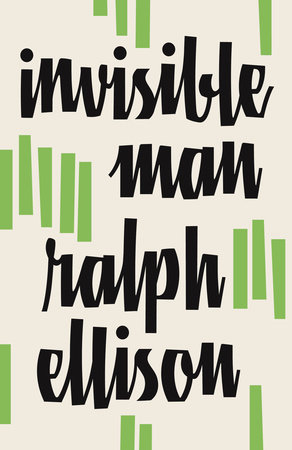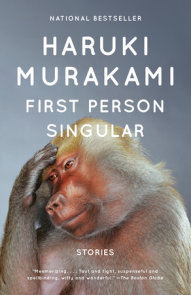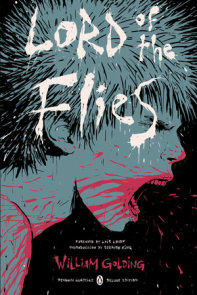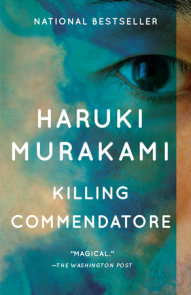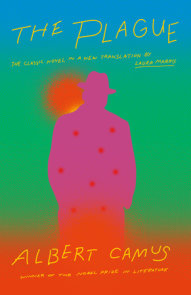TEACHING GUIDE
NOTE TO TEACHERS
Written in the politically and socially turbulent 1940s, Invisible Man is one of the definitive novels of the African-American experience; it is also one of the definitive novels for all Americans. The issues Ellison so powerfully addresses are those that confront everyone who lives in the modern world: not only racism but the very question of personal identity, our frustrated impulse to assert ourselves in a world which is metaphorically blind. Ellison’s hero is invisible within the larger culture because he is black, but his feelings can easily be understood by all those who experience the anonymity of modern life. Shortly before his death Ellison acknowledged the fact that his novel had expanded the very meaning of the word "invisible." Invisibility, he said, "touches anyone who lives in a big metropolis." (New Yorker, 5/2/94)
The novel’s nameless narrator (the Invisible Man) is representative of many intelligent young African-Americans of his generation. Born and raised in the rural South, he is a star pupil at a college for black students. He dreams of racial uplift through humility and hard work, a doctrine preached by the school and the larger Southern culture. When his innocent idealism lands him in trouble, he comes to understand the hypocrisy behind the school’s professed philosophy and heads for the greater freedom of New York.
The naive young man is "educated" by being slowly disabused of all his ideals. Despite this, in the end he chooses to reject cynicism and hatred and to embrace a philosophy of hope. Ellison wanted his novel to transcend the rage and hopelessness of the protest novel and assert a world of possibility, however remote. It is surreal because "life is surreal," and it is funny—often hilariously so—because "what else was there to sustain our will to persevere but laughter?" [p. xv]. The novel also reflects the rhetorical richness of the African-American culture, using a wide range of idiomatic styles. Ellison’s anti-realism stood out at a time when realism was the dominant fictional style, particularly in the protest novel. Through it he asserts the excitement of human experience in a world in which the unexpected is always happening.
TEACHING IDEAS
The questions, exercises, and assignments that follow are designed to guide your students through Invisible Man and to help them approach it as both a work of literature and a provocative critique of our society. How are minorities treated in our culture? What justifications do white people make to themselves for this treatment? Do African-Americans ever show prejudice toward one another? The questions below test reader comprehension, suggest themes for in-depth discussion, and point the way toward more extensive reading and research. Students should be encouraged to read the newspapers and watch the news on television, keeping a journal on contemporary events that touch racial themes. How much, or how little, has changed since the book’s publication in 1952? Are we any closer to realizing Ellison’s imagined society of possibility?
DISCUSSION AND WRITING
Comprehension
1. What is the significance of the Founder’s posture in his statue on campus?
2. Why is Mr. Norton so affected by Jim Trueblood’s story?
3. Why have white people lavished help upon Trueblood since his disgrace, when they ignored him before his crime?
4. Why do the students and teachers at the college hate and fear Trueblood and the other "black belt" inhabitants?
5. Why doesn’t Dr. Bledsoe give the narrator a second chance at the college?
6. Why does the narrator refuse grits and pork chops at the breakfast counter?
7. Why does young Mr. Emerson show Invisible Man the contents of the letter? Why does Invisible Man mistrust his offers of friendship?
8. What is the motto of the Liberty Paint Company? What is their method of keeping paint pure white? In what way does the ethos of the company resemble that of the American Republic?
9. Why is Lucius Brockway against unionization?
10. Is Brockway being used by the white bosses, or is he taking advantage of his position and knowledge to use others?
11. Ellison gives a detailed catalogue of the belongings of the elderly evicted couple. What do these individual items signify?
12. Why does Emma think Invisible Man should be "a little blacker"? [p. 303]
13. What is the significance of Mary’s cast-iron bank? Why is it appropriate that the narrator is unable to rid himself of it? Is it significant that the people who won’t let him discard it are themselves black?
14. Why does Brother Tarp choose the narrator to be the recipient of his leg chain?
15. Is Invisible Man’s rage at Clifton’s Sambo doll more than just racial? Does he see it as specifically mocking him?
16. What does the word "Tod" mean in German? Why is this a symbolically appropriate name for Tod Clifton?
17. What does Invisible Man mean when he says that Sybil sees him as an "entertainer?" [p. 521]
18. In what way is the riot at the end of the book reminiscent of the battle royal at the beginning?
19. What has accounted for the change in Mr. Norton’s manner when he meets the narrator at the end of the book?
20. Why does Invisible Man move underground after the riot?
21. What was Jack’s reason for writing the anonymous letter?
For in-class discussion
1. The narrator’s grandfather tells him to "overcome ’em with yeses, undermine ’em with grins, agree ’em to death and destruction, let ’em swoller you till they vomit or bust wide open." [p. 16] How does the narrator’s interpretation of this advice change during the course of the novel? Do you feel that Dr. Bledsoe shares the grandfather’s philosophy? What about Tod Clifton? And what about Rinehart?
2. The town leaders at the battle royal tell the narrator, "We mean to do right by you, but you’ve got to know your place at all times." [p. 31] What kind of help are the men actually offering? What "place" in the world do they plan for young black people? Is there any real benevolence included in their wish to dominate?
3. What is the significance of the briefcase treasured by Invisible Man throughout the novel?
4. Ellison carefully lays out the geography of the state college for Negroes, with its whitewashed buildings, its black powerhouse, the barren road leading to the insane asylum, and the nearby shanties of the "black belt." How does this map symbolize the idealistic vision of the school and the hard realities of black life which the school’s philosophy attempts to deny?
5. Mr. Norton is "a bearer of the white man’s burden," a "symbol of the Great Traditions." [p. 37] How does he personify the paternalistic ethos, for better and for worse?
6. Many critics suggest that the veterans at the Golden Day represent the repressed black middle-class–that these are the men who would have been the community’s doctors, lawyers, teachers, and scientists had they been allowed the same opportunities as whites. Do you agree with this thesis?
7. The "doctor" at the Golden Day calls the narrator "a walking zombie, the most perfect achievement of [Norton’s] dreams." [p. 94] What does he mean by this? What is the narrator’s reaction? Does he eventually come to share the doctor’s opinion?
8. How does Ellison, with both his black and his white characters, employ the metaphor of blindness? How does the metaphor of blindness relate to that of invisibility?
9. In The Souls of Black Folk (1905), W.E.B. Du Bois theorized that the black American has two selves, a white one and a black one. How does Dr. Bledsoe exemplify that principle? How does the principle cause the breakdown of Tod Clifton’s character?
10. The Founder and his followers make much of the Christian virtue of humility. In what ways can Invisible Man be seen as an elaborate critique of that virtue?
11. Upon his arrival in New York, Invisible Man observes that "a new world of possibility suggested itself to me faintly, like a small voice that was barely audible in the roar of city sounds." [p.159] Does the character retain that faint sense of possibility despite the events of the novel?
12. Reflecting on the black race after his encounter with the blueprint peddler, Invisible Man feels both pride and disgust. How are these two emotions juxtaposed in his feelings for Mary Rambo? For Tod Clifton? For Rinehart?
13. Young Mr. Emerson sees himself as Huck Finn and the narrator as Jim. What is the social significance of such a fantasy? What is the psychological significance?
14. What does the freedom to like chitterlings, yams, or spirituals mean to the narrator?
15. How does the narrator’s vision of Mr. and Mrs. Provo, the evicted couple, differ from Brother Jack’s? Do the two men have the same difference in outlook when it comes to Tod Clifton?
16. What does the Brotherhood mean when it uses the word "History"? And "Science"?
17. Why does the narrator reject Ras the Exhorter’s philosophy? In what ways does Ellison set out to make Ras’s philosophy both attractive and repellent?
18. Invisible Man wonders how the white men of the Brotherhood differ from the trustees of his college. Do they, in fact, differ fundamentally? If so, in what ways?
19. How does Invisible Man react when he is told he will be concentrating on "the woman question"? How are women as a group treated in the novel?
20. The narrator mockingly calls Brother Jack "the great white father." [p. 473] In what way have Jack and the Brotherhood assumed the psychological role of slaveowners?
21. How does the protean character of Rinehart come to represent a world of possibilities for Invisible Man? Does Invisible Man accept or reject those possibilities? Is "Rinehartism" cynicism, or realism?
22. Invisible Man wonders what value personal integrity can have in his cynical world. Does it seem to you that it is possible to retain one’s integrity while dealing with the likes of Dr. Bledsoe or Brother Jack? Do any of the book’s characters in fact retain their integrity?
BEYOND THE BOOK
1. Research the history of African-Americans from the period of Reconstruction following the Civil War through World War II, paying special attention to segregation ("Jim Crow") laws and to the legal gains made by African-Americans during the Forties. Would a young black intellectual in 1950 feel only disgust for his world, or would he see cause for hope in the future?
2. Great numbers of black Southerners emigrated to the cities of the North during the Twenties and Thirties. The new lives of these urban African-Americans in the industrial North were radically different from those they had led in the agrarian South. On the surface, they confronted much less prejudice. What were the differences in racial attitudes between the two cultures? Was the prejudice of the North less real because it was better hidden?
3. Ellison’s account of the "Brotherhood" is a thinly disguised depiction of the American Communist Party during the Stalin era. Ellison was himself involved with the Party, as were many other black intellectuals during the Thirties. Research Stalinist ideology and Communist activity during the Thirties. Why did so many black Americans identify themselves with the Communist Cause? Why did Party officials see the black community as a natural ally? Were their aims essentially allied or opposed?
4. At the time of which Ellison writes, there were (as there are today) competing ideas of how the black race could best improve its lot. On one side was Booker T. Washington’s philosophy of "racial uplift" and humility, given voice by the Founder and by Reverend Barbee in Invisible Man. On another were the militant ideals of Marcus Garvey (fictionalized in Invisible Man as Ras the Exhorter), who spoke loudly for black separatism. Another influential thinker, more militant than Washington but less so than Garvey, was W.E.B. Du Bois. Research Washington, Du Bois, and Garvey. What do you see to be the strong and weak points in their philosophies?
5. Read the story "Tar Baby" from Uncle Remus: His Songs and His Sayings by Joel Chandler Harris. How does Brer Rabbit’s reaction to the Tar Baby compare with the ways in which Invisible Man‘s various white characters respond to the black ones? Is there a parallel between Tar Baby’s "behavior" and the advice given by Invisible Man’s grandfather?
6. The race riot at the end of Invisible Man is closely based upon the Harlem riot of August 1943. Compare the riot as depicted by Ellison with news reports on the recent race riots in Los Angeles and Washington. What similarities do you see? What differences?
7. The question of naming is an important one in Invisible Man and for African-Americans in general in light of our long history of slavery. The narrator is nameless to his readers; he is renamed by the Brotherhood as slaves were renamed by a new master. In refusing to give us either of his names, what kind of statement is the narrator making about his identity? Assuming that the book ends on a hopeful note, do you think that one day the narrator will have a real name?
8. In 1963 the African-American author James Baldwin wrote: "In most of the novels written by Negroes until today…there is a great space where sex ought to be; and what usually fills this space is violence." Is this true of Invisible Man? What role do women play in the story? Are they even regarded by the narrator as being fully human?
9. At the end of the novel, Invisible Man says, "Whence all this passion toward conformity anyway?—diversity is the word. Let man keep his many parts and you’ll have no tyrant states. Why, if they follow this conformity business they’ll end up by forcing me, an invisible man, to become white, which is not a color but the lack of one….America is woven of many strands; I would recognize them and let it so remain." [p. 577] The debate between the value of diversity versus conformity–or consensus–is still very much alive today, more than forty years after the appearance of Invisible Man. What contribution does the novel make to this cultural debate?
10. The narrator finally concludes that "Even an invisible man has a socially responsible role to play." [p. 581] This is an important tenet of Ellison’s philosophy, for he believed that art should serve democracy. In what way is Invisible Man a novel that deals specifically with the problems and challenges of democracy?
11. The late 1940s saw an improvement in the rights and respect accorded black Americans, thanks largely to the important role they played in World War II. What were the principles for which the Allies fought in World War II? Why did that war specifically cause white Americans to rethink their own values and racial policies?
OTHER TITLES OF INTEREST
James Baldwin, Nobody Knows My Name; Fyodor Dostoevsky, Notes From Underground; Frederick Douglass, The Life and Times of Frederick Douglass; W.E.B. Du Bois, Autobiography, The Souls of Black Folk; Ralph Ellison, Going to the Territory, Shadow and Act; Booker T. Washington, Up from Slavery; C. Vann Woodward, The Strange Career of Jim Crow; Richard Wright, Black Boy, Native Son.
ABOUT THIS GUIDE
This teacher’s guide was written by Brooke Allen. Brooke Allen has a Ph.D. in literature from Columbia University, and has spent several years in France as a teacher and a journalist. She writes regularly on books for The New Criterion, The Wall Street Journal, and other publications.
COPYRIGHT
Copyright © 1994 by VINTAGE BOOKS






